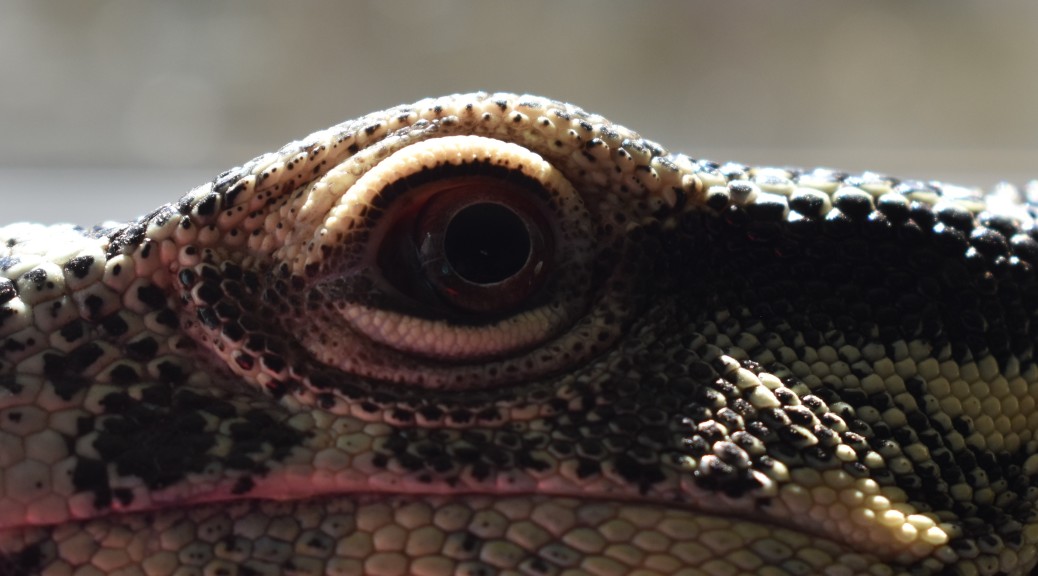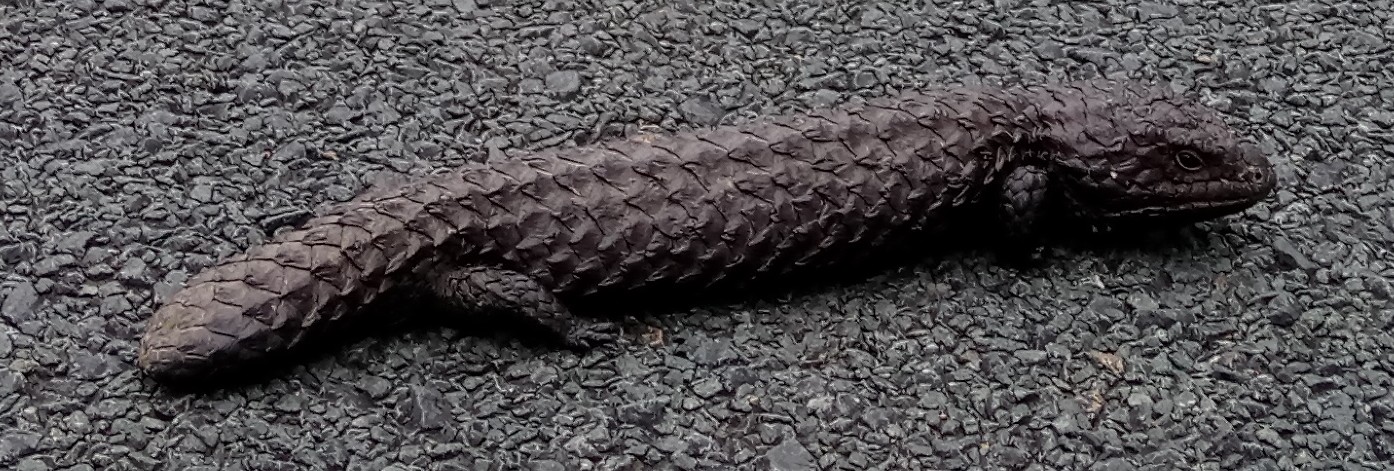Eastern blue-tongue lizard (Tiliqua scincoides scincoides)
The Eastern blue-tongue skink is a sub-species of Common blue-tongue (Tiliqua scincoides), and one of 6 species of blue-tongue lizard (Tiliqua) found throughout Australia. They can be found through the eastern areas of Australia, which includes the ACT. This species is one of the most common reptiles that will occur in suburban areas within the capital!
This eastern blue-tongue is commonly misidentified as a venomous snake due to its sleek like body, colour and pattern, and its quick snake like movements. They can even fold their back legs in against their bodies and power their movements with their front legs alone, giving the appearance of a snake! They can be distinguished from a snake however with their large head, short and thick body, and stout legs. They are harmless if left alone, and can be a wonderful addition to the garden! You may find them living in a veggie patch, in an overgrown bush/hedge, or even a retaining wall. Some lucky people may have a resident blue-tongue living in their yard for several years.
Cats and dogs often attack these cute little guys, so it’s important to keep your cats contained inside and/or within a cat run, and train your dog. You never know, a dog’s aversion to a blue-tongue – a reptile – may proof life-saving if such a trained dog then encountered another reptile – a snake – and knew to stay away.
South-eastern Shingleback (Tiliqua rugosa aspera)
The South-eastern shingleback is a subspecies of shingleback (Tiliqua rugosa) which occurs through SA and east through VIC, NSW and the ACT. They are one of 6 species that belong to the blue-tongue group (Tiliqua) here in Australia.
This species is easily identified due to the large scales that cover the entire animal. They typically have 4 short but well developed legs, a large robust head and a tail which may vary in shape and length (some may even resemble another head). When they feel that they need to defend themselves they will open their mouth very wide and stick out their dark, blue/purple tongue- this is usually accompanied by a loud “huff”. Don’t worry though, this is just a display and they are very reluctant to bite unless you pick them up or put your fingers near their mouths.
Is this animal dangerous? No. If left alone they have a very peaceful nature, but if provoked and continuously aggravated, they may choose to deliver an incredibly powerful bite which may leave a bruise and may be painful for small children.
Did you know that common names will vary for some species and it is only the scientific name which is universal? This species is known by many names across Australia which includes the Bobtail, Sleepy lizard, Two-headed lizard, Pinecone lizard, Bogie and Stumpy tail.
MORE LIZARD SPECIES INFORMATION COMING SOON!



